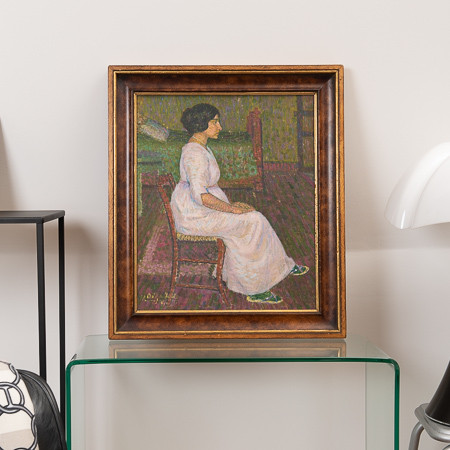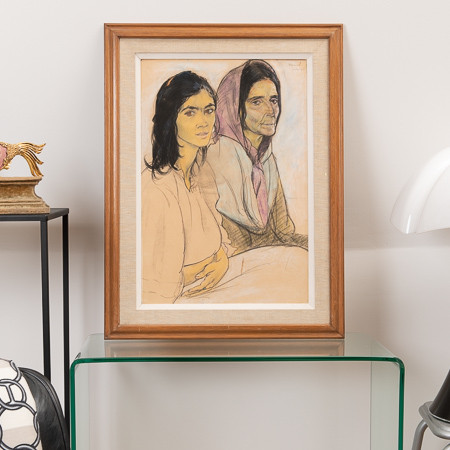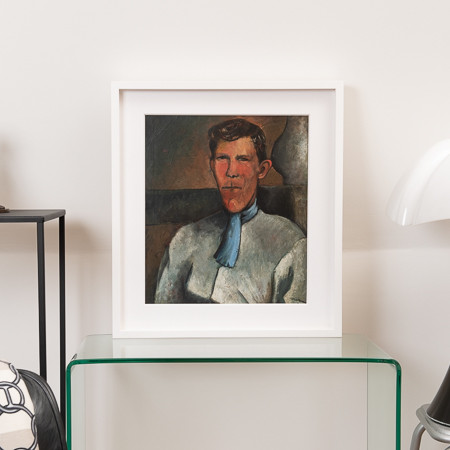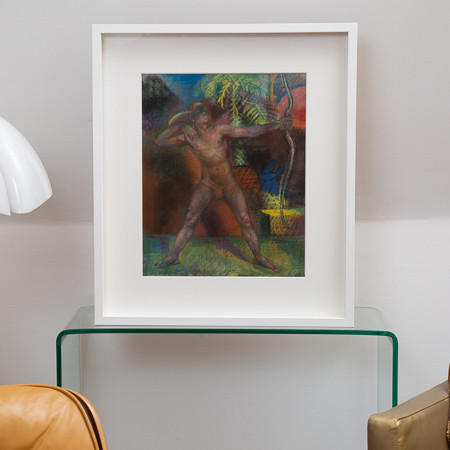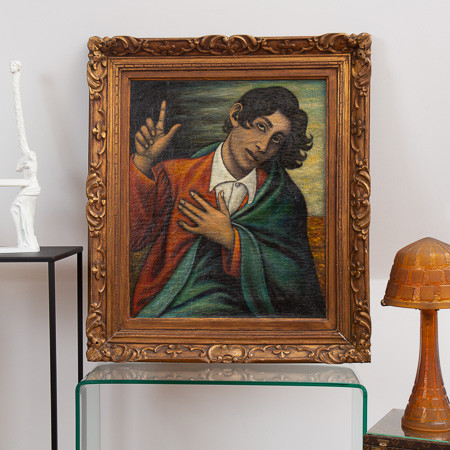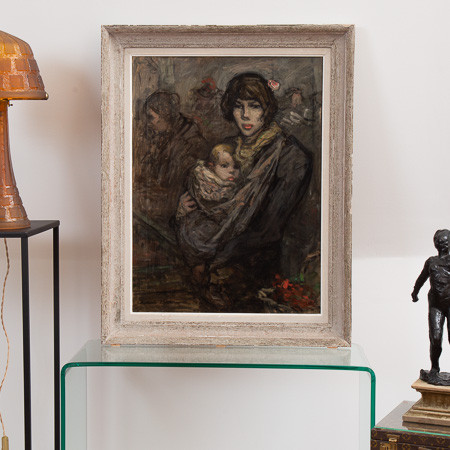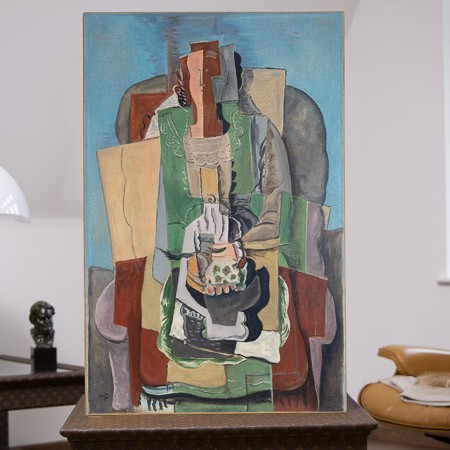About
Oil on canvas signed and dated in the bottom right part «Hayden 59» and titled on the back «La table triangulaire». A certificate of authenticity from Mr. Christophe Zagrodzki, certified expert, dated March 22, 2021, will be given to the purchaser.
Oil on canvas signed and dated in the bottom right part «Hayden 59» and titled on the back «La table triangulaire». A certificate of authenticity from Mr. Christophe Zagrodzki, certified expert, dated March 22, 2021, will be given to the purchaser.
Born in Warsaw, Hayden left Poland for Paris in 1907. During the First World War, he moved into a new studio on Boulevard Raspail, not far from Picasso, Severini, and Metzinger. Despite the war, Montparnasse was in full swing, and Hayden befriended Matisse, Max Jacob, Cocteau, Lipchitz, and Gris. The latter introduced him to Léonce Rosenberg, whose gallery L’Effort Moderne was a hub of the avant-garde.
La table triangulaire is a perfect example of how Hayden managed to make the rigorous grammar of Cubism his own, without abandoning a refinement that constitutes the noble and fierce originality of his painting. In the quintessential Cubist genre of still life, Hayden succeeded in creating a new sense of space through the layering of lines and planes and the juxtaposition of warm and cool colors. He preserved a very personal tone, achieving, with great simplicity of means, a synthesis of his Cubist experiences and his real aspirations.
As Raymond Cogniat wrote in Le Figaro (January 29, 1960): “After having played an important role in Cubism, Hayden, in order to escape formulas, pursued his research in an entirely different direction and, no doubt, paid for this independence with the indifference of those who had once supported him. After a long struggle, he has recently found a new fulfilment in landscapes and still lifes where the lessons of Cubism are completely transposed and result in a highly refined synthesis of forms and colors. He is, like a few other painters—Villon in particular—an example of the freshness and inventiveness that some men retain at a time when one might assume their powers are waning.”
Jean-Jacques Lerrant noted in Le Progrès de Lyon (February 10, 1960) that “Hayden, in the wisdom of age, regains a popular flavor, a kind of poetic tenderness for the objects of the still life […]. Everything then seems to float in a magical yet deeply carnal unreality, thanks to color.”
In 1960, on the occasion of an exhibition of his works, his friend Samuel Beckett wrote that Hayden had “throughout his life, and like few others, resisted the two great temptations: that of the real and that of falsehood.” And he added: “Everything is recognizable, but in being so, unrecognizable. A strange order of things, made of order lacking things, of things lacking order.”
This period, spanning from 1953 to 1970, is considered the flowering of Henri Hayden’s artistic career.
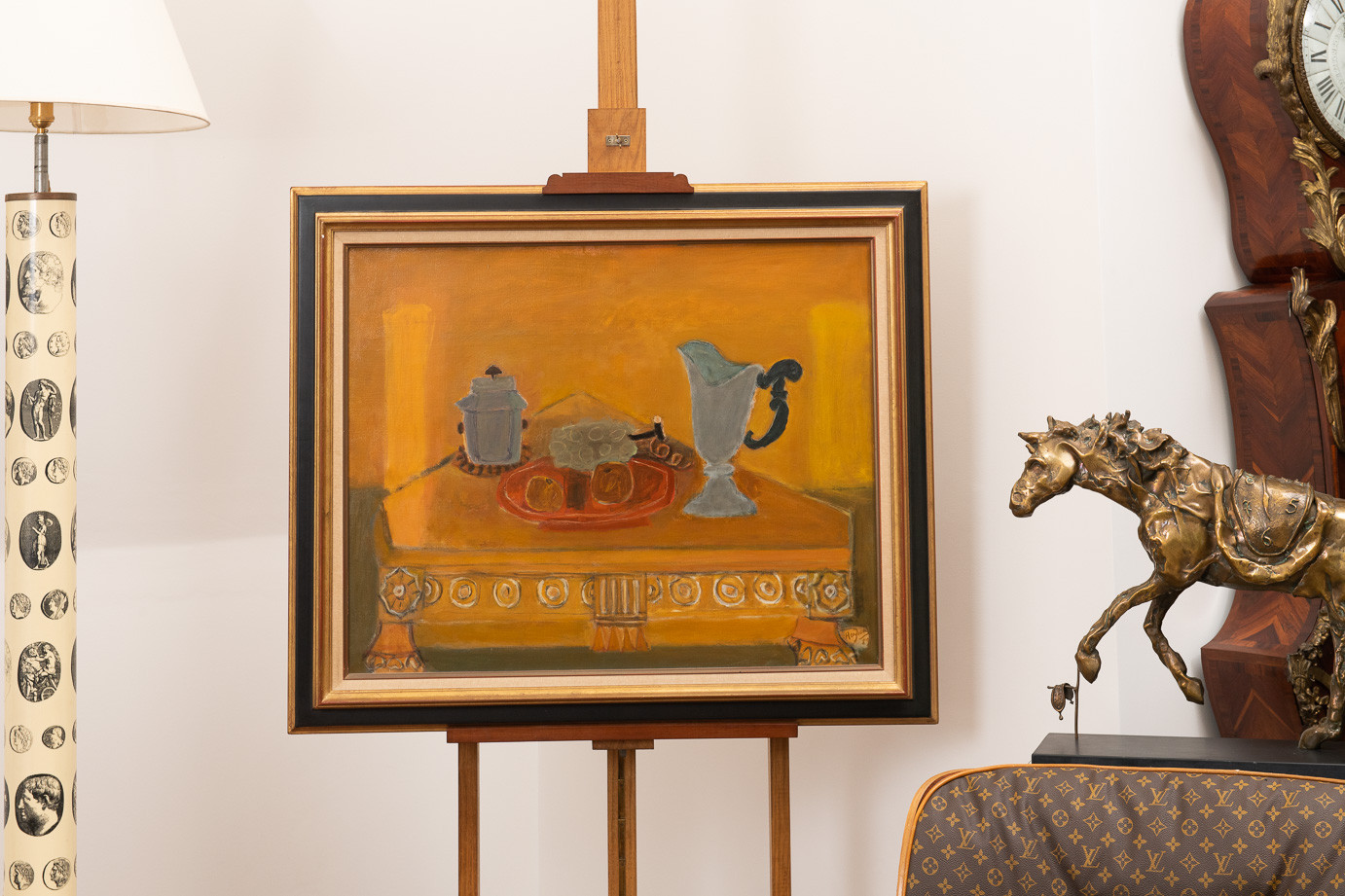
Characteristics
- Year: 1959
- Artist: Henri Hayden
- Sizes: 81 x 65 cm (Width x Height)
Bibliography
Selz, Jean. Hayden. Geneva: Éditions Pierre Cailler, 1962, illustration no. 80 (black and white), reproduced.
Comparable reference on the art market
On November 22, 2016, Christie's sold an oil on canvas by Henri Hayden entitled Interieur rouge, dated 1960 and belonging to his series of still lifes, similar to the work we are offering for sale, La table triangulaire.


